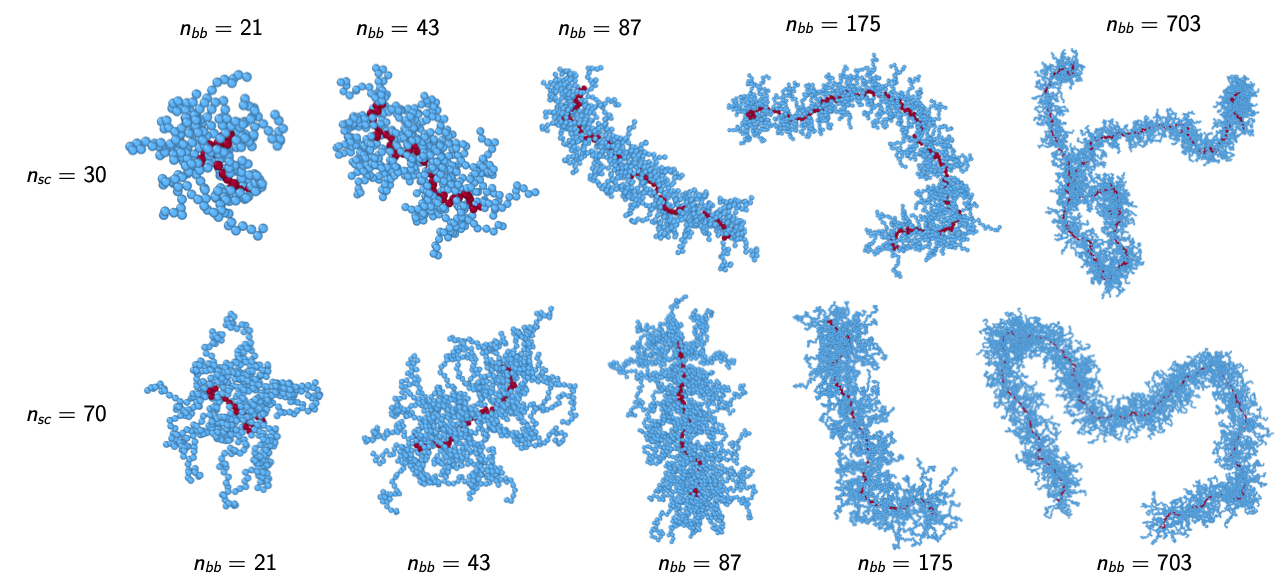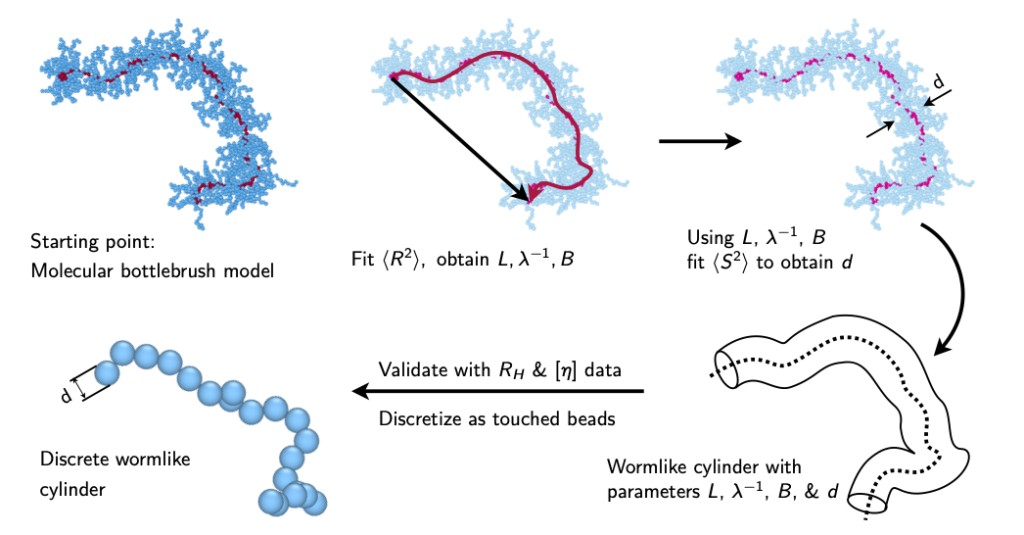
Bottlebrush Polymer Structure, Assembly, and Dynamics
Bottlebrush polymers are branched polymers characterized by densely-grafted side-chains, which have a large number of prospective applications in advanced materials. These polymers can be used to form photonic crystals with ‘structural color’, behave as pressure-sensitive adhesives, and form low-modulus elastomers. The usefulness of these polymers is based on their unique properties – the densely-grafted side chains increases molecular stiffness, suppresses entanglements, and imbue the polymer with a molecular ‘thickness’ that provides another tunable molecular parameter for molecular design.
In collaboration with Profs. Damien Guironnet, Ying Diao, and Simon Rogers we have been studying the solution-driven structure and assembly of these bottlebrush molecules, both in dilute and non-dilute solution. These solutions are capable of exhibiting structural color that can be tuned ‘on the fly’ by processing flows, however the molecular origin of this is not well understood. We are developing new ways to coarse-grain and model the assembly of bottlebrush block copolymers in solution, to predict and provide molecular context for equilibrium and out-of-equilibrium structural color. We have built up a method from chemistry-informed coarse-grained simulations, and uses the wormlike cylinder model to simplify our molecular description to only a few, key molecular parameters (bottlebrush width, length, flexibility). This simplified model enables large-scale simulation of bottlebrush assembly that matches with the efforts of our collaborators.
Collaborator Damien Guironnet can synthesize shape-defined bottlebrush polymers (AFM pictures, left). Our simulations can predict the structure and solution properties of these molecules (simulation snapshots, right). We have developed inverse design protocols to determine what architectures to synthesize to obtain a desired molecular shape.

We have developed a coarse-graining protocol that takes ‘explicit side-chain’ models of bottlebrush polymers and describes their structure using only a few key molecular parameters. For solution bottlebrush polymers, this procedure is internally-consistent and captures a variety of single-molecule properties with a single parameter set.
